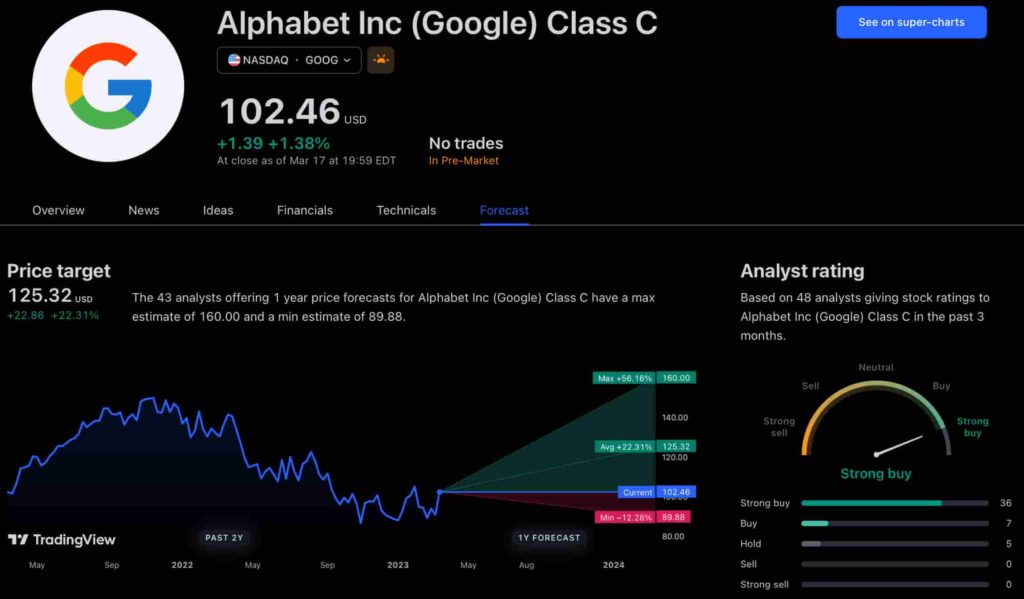The new app is called watchGPT and as I tipped off already, it gives you access to ChatGPT from your Apple Watch. Now the $10,000 question (or more accurately the $3.99 question, as that is the one-time cost of the app) is why having ChatGPT on your wrist is remotely necessary, so let’s dive into what exactly the app can do.
NEWS
5 Ways to Generate Fresh, Intriguing Audience-Targeted Content Ideas

Are you out of content ideas?
If your brain feels wrung-out and your eyes hurt from scanning article after article about finding new topics and brainstorming, it’s time to come at the problem from a new angle.
Particularly, the research angle.
Instead of pulling ideas out of thin air, researching content ideas gives you concrete proof that, yes, your audience is going to love this. That’s because you’re relying on the source itself to provide the fodder for your content.
Lean in, listen to what your audience wants to read, note their questions and problems, and take stock of what interests them. This is the pathway to content gold.
Here are some practical ways to dig in and collect those audience-backed content ideas through a little bit of old-fashioned qualitative research.
1. Network, Connect, and Converse with Your Ideal Leads
To find your greatest content ideas ever, focus on networking and having real conversations with your ideal leads.
Obviously, to do this, you need to understand your audience and be genuinely engaged within your industry and community.
Then, it’s time to:
- Find, follow, and interact with your people on social media.
- Pay attention to your social feeds and take opportunities to share and comment on others’ posts.
- When you see your ideal audience members having a discussion or asking questions, don’t be afraid to chime in.
- DM people with which you’ve established a connection and ask to pick their brains.
- Attend local industry events and conferences, and get into those topics you’re super passionate about in-person!
- Take notes and record the topics and questions you see popping up during your networking adventures.
To truly make this work, you can’t do it for a month and call it quits.
You need to invest time in networking and get interested in other people.
Expand your social circles with friendliness and curiosity, and your brand will benefit along with your well-being.
2. Mine Live Chats for Content Ideas
Next up: If you employ a live chat feature on your website, those conversations are great fodder for content ideas.
At my online content agency, our live chat tool of choice is Drift.

One of Drift’s best features is the ability to review all opened and closed conversations.
Using this tool, I regularly mine the live chats that happen on our site and look for FAQs from clients.
What questions and topics do I see over and over? These are ones to jump on and write content around.
For example, our audience is largely made up of marketers who are interested in SEO topics. Here’s an example from a Drift chat – this user is asking about Google Carousel:

Because we get so many SEO questions, 30-50% of our blog content revolves around these topics.
Pay attention to the trends you see from conversations in your live chat platform and use them to create relevant, right-here-right-now content.
3. Listen to Phone Calls from Sales
Another sales channel you shouldn’t leave uninvestigated for content ideas: Phone calls your sales team has with prospects.
These calls are gold mines for potential content topics, especially if a user is calling with a series of questions about your service/product.
If you start to hear the same questions over and over, guess what? Time to answer them in some meaty content pieces.
If you use a CRM system for sales like HubSpot or Salesforce, these platforms should have call monitoring and recording available as baked-in features. Don’t leave these content resources unexplored.
4. Create a Channel for Your Team to Share FAQs from Leads
While you’re leveraging conversational marketing to come up with content ideas, don’t forget to let your other team members in on the intel-gathering.
In particular, create a specific channel where your team can share FAQs from interactions with leads. Collecting these insights in one place will make your research and analysis a lot easier.
Some great collaborative platforms this would work well on include:
The channel can be as simple as a shared Google doc or a dedicated Slack channel. Use whatever integrates best with your team’s workflow.
Bonus: The topic research you gather from leads and customers can generate not only blog topics but also critical webpage topics you might be missing on your site, otherwise. Win-win.
5. Step Away from Your Desk After Research-Gathering (Let Your Brain Percolate)
This final tip for coming up with content ideas is about giving your mind room to breathe. This is the step to take after your research-gathering session has ended.
Specifically, after you’re satisfied with the amount of qualitative data you’ve collected, step away from your desk for a while. Don’t jump straight into writing.
Why? Because that pause after research gives your brain the time to process what you discovered.
According to dozens of studies on the subject, taking mental breaks helps refresh your attention, improves productivity, and generates brighter sparks of creativity.

Give yourself space to let those new thoughts, ideas, and research nuggets percolate.
You’ll come up with better, more fully synthesized content topics that provide insight and value to your audience. (Yes, I’m giving you permission to daydream at your desk on the regular. You’re welcome.)
Look Beyond the Expected Ways to Generate Content Ideas
If you use the same techniques as everyone else to come up with your content ideas…
Yep. Your content also will look like everyone else’s.
To differentiate, try to find unexpected, research-backed ways to ideate. Look to all the sources of data at your disposal and do a little detective work à la Sherlock Holmes.
Finally, remember to try to find out what your audience wants – after all, they’re the point of this little thing we call content.
Facebook Faces Yet Another Outage: Platform Encounters Technical Issues Again

Uppdated: It seems that today’s issues with Facebook haven’t affected as many users as the last time. A smaller group of people appears to be impacted this time around, which is a relief compared to the larger incident before. Nevertheless, it’s still frustrating for those affected, and hopefully, the issues will be resolved soon by the Facebook team.
Facebook had another problem today (March 20, 2024). According to Downdetector, a website that shows when other websites are not working, many people had trouble using Facebook.
This isn’t the first time Facebook has had issues. Just a little while ago, there was another problem that stopped people from using the site. Today, when people tried to use Facebook, it didn’t work like it should. People couldn’t see their friends’ posts, and sometimes the website wouldn’t even load.
Downdetector, which watches out for problems on websites, showed that lots of people were having trouble with Facebook. People from all over the world said they couldn’t use the site, and they were not happy about it.
When websites like Facebook have problems, it affects a lot of people. It’s not just about not being able to see posts or chat with friends. It can also impact businesses that use Facebook to reach customers.
Since Facebook owns Messenger and Instagram, the problems with Facebook also meant that people had trouble using these apps. It made the situation even more frustrating for many users, who rely on these apps to stay connected with others.
During this recent problem, one thing is obvious: the internet is always changing, and even big websites like Facebook can have problems. While people wait for Facebook to fix the issue, it shows us how easily things online can go wrong. It’s a good reminder that we should have backup plans for staying connected online, just in case something like this happens again.
NEWS
We asked ChatGPT what will be Google (GOOG) stock price for 2030

Investors who have invested in Alphabet Inc. (NASDAQ: GOOG) stock have reaped significant benefits from the company’s robust financial performance over the last five years. Google’s dominance in the online advertising market has been a key driver of the company’s consistent revenue growth and impressive profit margins.
In addition, Google has expanded its operations into related fields such as cloud computing and artificial intelligence. These areas show great promise as future growth drivers, making them increasingly attractive to investors. Notably, Alphabet’s stock price has been rising due to investor interest in the company’s recent initiatives in the fast-developing field of artificial intelligence (AI), adding generative AI features to Gmail and Google Docs.
However, when it comes to predicting the future pricing of a corporation like Google, there are many factors to consider. With this in mind, Finbold turned to the artificial intelligence tool ChatGPT to suggest a likely pricing range for GOOG stock by 2030. Although the tool was unable to give a definitive price range, it did note the following:
“Over the long term, Google has a track record of strong financial performance and has shown an ability to adapt to changing market conditions. As such, it’s reasonable to expect that Google’s stock price may continue to appreciate over time.”
GOOG stock price prediction
While attempting to estimate the price range of future transactions, it is essential to consider a variety of measures in addition to the AI chat tool, which includes deep learning algorithms and stock market experts.
Finbold collected forecasts provided by CoinPriceForecast, a finance prediction tool that utilizes machine self-learning technology, to anticipate Google stock price by the end of 2030 to compare with ChatGPT’s projection.
According to the most recent long-term estimate, which Finbold obtained on March 20, the price of Google will rise beyond $200 in 2030 and touch $247 by the end of the year, which would indicate a 141% gain from today to the end of the year.
Google has been assigned a recommendation of ‘strong buy’ by the majority of analysts working on Wall Street for a more near-term time frame. Significantly, 36 analysts of the 48 have recommended a “strong buy,” while seven people have advocated a “buy.” The remaining five analysts had given a ‘hold’ rating.

The average price projection for Alphabet stock over the last three months has been $125.32; this objective represents a 22.31% upside from its current price. It’s interesting to note that the maximum price forecast for the next year is $160, representing a gain of 56.16% from the stock’s current price of $102.46.
While the outlook for Google stock may be positive, it’s important to keep in mind that some potential challenges and risks could impact its performance, including competition from ChatGPT itself, which could affect Google’s price.
Disclaimer: The content on this site should not be considered investment advice. Investing is speculative. When investing, your capital is at risk.
NEWS
This Apple Watch app brings ChatGPT to your wrist — here’s why you want it

ChatGPT feels like it is everywhere at the moment; the AI-powered tool is rapidly starting to feel like internet connected home devices where you are left wondering if your flower pot really needed Bluetooth. However, after hearing about a new Apple Watch app that brings ChatGPT to your favorite wrist computer, I’m actually convinced this one is worth checking out.
-
SEARCHENGINES6 days ago
Daily Search Forum Recap: April 19, 2024
-

 WORDPRESS6 days ago
WORDPRESS6 days ago13 Best HubSpot Alternatives for 2024 (Free + Paid)
-

 MARKETING6 days ago
MARKETING6 days agoBattling for Attention in the 2024 Election Year Media Frenzy
-

 WORDPRESS6 days ago
WORDPRESS6 days ago7 Best WooCommerce Points and Rewards Plugins (Free & Paid)
-

 MARKETING5 days ago
MARKETING5 days agoAdvertising in local markets: A playbook for success
-

 SEO6 days ago
SEO6 days agoGoogle Answers Whether Having Two Sites Affects Rankings
-

 SEARCHENGINES5 days ago
SEARCHENGINES5 days agoGoogle Core Update Flux, AdSense Ad Intent, California Link Tax & More
-

 AFFILIATE MARKETING6 days ago
AFFILIATE MARKETING6 days agoGrab Microsoft Project Professional 2021 for $20 During This Flash Sale















